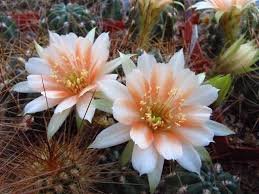
The giant panda (Ailuropoda melanoleuca) is one of the most iconic and beloved species in the world. Known for its distinctive black and white fur, large size, and peaceful demeanor, pandas have become a symbol of wildlife conservation. However, beyond their symbolic value, giant pandas play an important role in the ecosystem of the forests they inhabit. Understanding how pandas interact with other species in these forests is critical to effective conservation strategies and to preserving biodiversity in these habitats.
Panda habitats, primarily found in the mountainous regions of central China, are home to a wide variety of flora and fauna. The giant panda’s diet consists almost exclusively of bamboo, making it an important herbivore in these ecosystems. However, pandas are not isolated creatures in their environment. They coexist with a range of other animals, some of which share the same resources, while others may have limited interactions. These interactions can provide valuable insights into the ecology of the forest and the ways in which various species contribute to the balance of their environment.
In this article, we explore the research on how pandas interact with other wildlife in their forest habitats. From direct competition for resources to more subtle interactions, the relationships between pandas and other species are complex and varied. Understanding these interactions is essential for developing conservation strategies that protect not only the panda but also the broader ecosystem.
1. The Giant Panda’s Habitat and Its Ecological Role
Before delving into panda interactions with other species, it’s essential to understand the environment in which they live. The giant panda’s habitat consists primarily of bamboo forests in the mountainous regions of Sichuan, Gansu, and Shaanxi provinces in China. Bamboo makes up about 99% of the panda’s diet, and the forests provide them with not only food but also shelter and space for territorial behavior.
Pandas are typically solitary animals, with each adult occupying a defined home range that it defends from other pandas. While pandas’ interactions with each other are limited to mating and occasional encounters, they do share their habitat with a variety of other species. These species are often adapted to the same environment and rely on similar resources, creating a delicate balance within the ecosystem.
Some of the animals that share the panda’s habitat include red pandas, golden monkeys, takins, and various bird species. Understanding how pandas interact with these animals can help scientists create more holistic conservation plans for these forests and the many species that depend on them.
2. Competition for Resources: Pandas and Other Herbivores
One of the most direct interactions between giant pandas and other wildlife is competition for resources, particularly bamboo. Bamboo is a limited resource in panda habitats, and different species often rely on it for food. While pandas are specialized feeders with a highly adapted digestive system to process bamboo, other herbivores in the area also depend on bamboo as a food source.
2.1 Red Pandas and Bamboo Competition
Red pandas (Ailurus fulgens), a smaller relative of the giant panda, also live in the same mountainous bamboo forests. Though red pandas consume a wider variety of foods, bamboo still forms a major part of their diet. Because red pandas and giant pandas occupy overlapping territories, there is potential for competition for bamboo, particularly in areas where bamboo forests are fragmented or limited in size.
Research has shown that giant pandas and red pandas tend to occupy different elevations within the bamboo forests, with red pandas preferring higher altitudes and cooler climates, while giant pandas are more commonly found at lower elevations. This spatial separation reduces direct competition for bamboo, as the two species typically do not compete for the same food resources at the same time. However, in areas where bamboo resources are scarce, the potential for competition increases, and it becomes essential for both species to share the available resources.
2.2 The Impact of Bamboo Availability on Panda Populations
Studies have highlighted the importance of bamboo abundance in panda habitats. Giant pandas are obligate bamboo feeders, meaning that their diet consists almost entirely of bamboo, and they must consume vast quantities of it daily to meet their energy needs. Bamboo forests are highly sensitive to environmental changes such as climate change, deforestation, and habitat fragmentation. When bamboo becomes less abundant due to environmental pressures, it not only affects the pandas but also other herbivores that rely on it, such as red pandas and wild boars.
While pandas are less likely to directly compete with larger herbivores for food, they may still experience indirect effects when their food sources become scarce. This can lead to greater pressure on pandas’ habitats and an increase in conflict between species over available resources.
3. Predation and Panda Cubs: The Role of Other Wildlife
While giant pandas do not have many natural predators, their cubs are vulnerable to predation, particularly in the early stages of life. The main threats to panda cubs are from carnivorous animals, such as wild dogs, leopards, and wolves. Research on panda cubs in the wild is limited due to their vulnerability, but there is evidence to suggest that these predators may pose a risk to young cubs if they stray too far from the protection of their mothers.
Leopards, for example, are known to prey on smaller animals in panda habitats, including domestic livestock and smaller mammals. While they do not actively hunt adult pandas, leopards may occasionally target panda cubs if given the opportunity. In the wild, panda mothers are highly protective of their cubs and will move them to safe locations if they sense danger.
Wolves, which are found in some of the same regions as pandas, are another potential threat to panda cubs. Though wolves generally hunt larger prey such as deer and wild boar, they are known to be opportunistic and may target vulnerable panda cubs if they are left unattended.
Despite these potential threats, giant pandas have relatively few natural predators compared to other species in the same environment. Their large size, powerful jaws, and solitary behavior make them difficult for predators to target. However, the vulnerability of panda cubs to predation underscores the importance of protecting panda populations from both human activity and environmental threats.
4. Panda Interactions with Carnivores and Omnivores
Aside from predation risks to cubs, pandas have more indirect interactions with other carnivores and omnivores in their ecosystem. Though pandas are primarily herbivorous, they are not immune to the presence of these animals, which may compete for other resources or even come into conflict with pandas when food is scarce.
4.1 Golden Monkeys and Pandas
Golden monkeys (Rhinopithecus roxellana) are another species that shares the panda’s habitat. These monkeys are omnivorous, feeding on a variety of fruits, leaves, and flowers, which sometimes overlap with the panda’s diet. While golden monkeys are not direct competitors for bamboo, they are known to feed on other plants in the forest that pandas may also rely on.
Studies have shown that golden monkeys and giant pandas generally do not have significant conflicts over resources. However, the presence of golden monkeys may affect panda behavior, especially when the monkeys are feeding in close proximity to panda habitats. Golden monkeys are social animals, and their group dynamics can create noise and movement that could disturb solitary pandas. In some cases, pandas may avoid areas with high concentrations of golden monkeys, especially if the monkeys are active during the panda’s feeding hours.
4.2 Wild Boars and Pandas: A Complex Relationship
Wild boars (Sus scrofa) are omnivorous and are often found in panda habitats. They are opportunistic feeders, eating a variety of foods including roots, fruits, and small animals. Wild boars do not pose a direct threat to pandas, but their rooting behavior can negatively impact bamboo forests. Boars tend to disturb the ground while foraging for food, which can damage bamboo shoots and affect panda food availability.
Though wild boars and pandas occupy the same forests, their interactions are mostly limited to indirect effects. Pandas may be forced to relocate if food sources are damaged by boar activity. However, there is little evidence to suggest that boars and pandas engage in direct competition or conflict over resources, as pandas are primarily focused on bamboo and boars have a more varied diet.
5. Human Activity and Its Impact on Panda Interactions with Other Wildlife
Human activity, particularly in the form of deforestation, habitat destruction, and climate change, has significantly altered the interactions between pandas and other wildlife. As human populations grow and encroach on panda habitats, the availability of resources like bamboo becomes limited, and pandas are forced to compete with other species more intensively.
In some areas, human settlements and agricultural activities are causing fragmentation of panda habitats, forcing pandas and other wildlife to interact more frequently as they are squeezed into smaller, more confined areas. This can lead to greater competition for food and space, which is particularly problematic for pandas, as their survival depends on the availability of vast, contiguous bamboo forests.
Conservation efforts have been focused on creating and expanding protected areas and wildlife corridors to mitigate these effects. These efforts help ensure that pandas and other wildlife can continue to interact with minimal interference from human activity, preserving the delicate balance of the forest ecosystem.
6. Conclusion
The interactions between giant pandas and other species in their forest habitats are complex and multifaceted. From competition for resources like bamboo to indirect effects of predation and habitat disturbances, pandas share their environment with a wide variety of animals. Understanding these interactions is crucial for effective conservation efforts, as the survival of the panda is closely tied to the health and stability of the entire ecosystem.
Research on panda interactions with other wildlife helps inform conservation strategies, ensuring that both pandas and other species can thrive in their natural habitats. By focusing on the broader ecological picture, scientists and conservationists can develop solutions that not only protect pandas but also the biodiversity of the forest ecosystems they depend on. As habitat fragmentation and climate change continue to pose challenges, the future of the giant panda depends on both protecting these forests and fostering healthy relationships between all the species that call them home.









